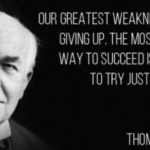Bridging the Gap Between Perception and Reality
Business-to-Business is dead. We now live in the world of P2P, or People-to-People. As you come to grips with this reality, you might as well go ahead and acknowledge that B2C is gone, too. Given the plethora of software products and apps generally categorized as social media, one would naturally assume that individuals must be closer than ever with those in our networks. However, that is simply not true with regard to our real relationships.
Perception and reality are at even greater odds in today’s competitive business landscape. As a professional in the small business world, your success depends on how well you adapt to this disparity between perception and reality, in both your views and in your subsequent efforts.
I doubt there is any danger in assuming of most business owners, that their primary goal is to satisfy their customers so as to obtain the highest percentage possible of repeat business from them. Unfortunately, examples abound to the contrary. The gap between an organization’s published mission statement and the perception of their customers can be very wide indeed. Is this true of your business? What are you doing to ensure your customers have an accurate perception? Or if you’re not sure they do, what are you doing to change it?
When I speak to audiences I often ask this question, “What is your most important asset, business or personal?” If you were in the audience, how would you answer that question?
Typical audience responses include the following: my degree, my experience, my family, my time, my friends, my unique skill, my network, my credentials, etc. I agree that each of those things is valuable and truly important. But as important as they are, though, I asked for the most important asset. None of those are the correct answer.
Let me give you a few hints. It’s something that every one of us possesses, though most don’t value it as they should. It’s something that we can manage, but we can’t control it. It precedes us. It follows us. Once it’s established, it never leaves us. Perhaps you’ve guessed by now. It’s our reputation. More specifically, it’s your reputation. Even when we are fully aware of the importance of our reputations, we might not fully realize the discrepancy between the perception of our reputation and the reality of our reputation.
One of the most universally understood conditions is the disconnect that occurs when our “left hand” doesn’t know what our “right hand” is doing. Consider your business: Is your “right hand” (the primary goal) working in cooperation with what your “left hand” (the delivery) is doing? How accurately can your customers describe your primary goal based on the product/service/follow-through they receive? How wide is the gap between perception and reality?
Small business owners are customers, too. You have, no doubt, encountered people and the companies they represent who have treated you, as the customer, in varying degrees along the spectrum of quality customer service. We’ve all been treated magnificently and reprehensibly. As a result, we choose whether or not to do business with that person and/or their company again.
Yet, we allow that perception/reality gap to exist in our own organizations all too often. Instead of applying the principles and employing the best practices of those magnificent experiences, we settle for maintaining the status quo.
We all know how we like to be treated. We remember the places we’ve been treated well. In fact, we vote for them with every dollar we spend. Or withhold votes by selecting for their competition. Unfortunately, we don’t maintain this mindset when we’re vying for the votes of our customers, and we fail to establish the mindset as an absolute amongst everyone else in our company.
Make no mistake, the most valuable “asset” we have is our reputation. It precedes us. It follows us. It must be perfected and guarded. But the first step is bridging the gap between the reputation we think we have with others and the reputation we actually have with others. Closing that gap will determine how much we actually achieve in the brutal battlefield otherwise known as the marketplace.


 +17078510440
+17078510440





